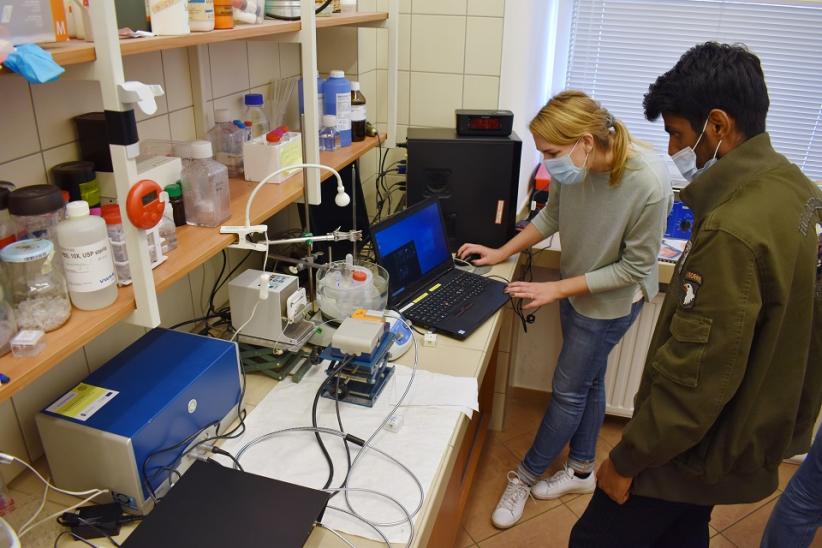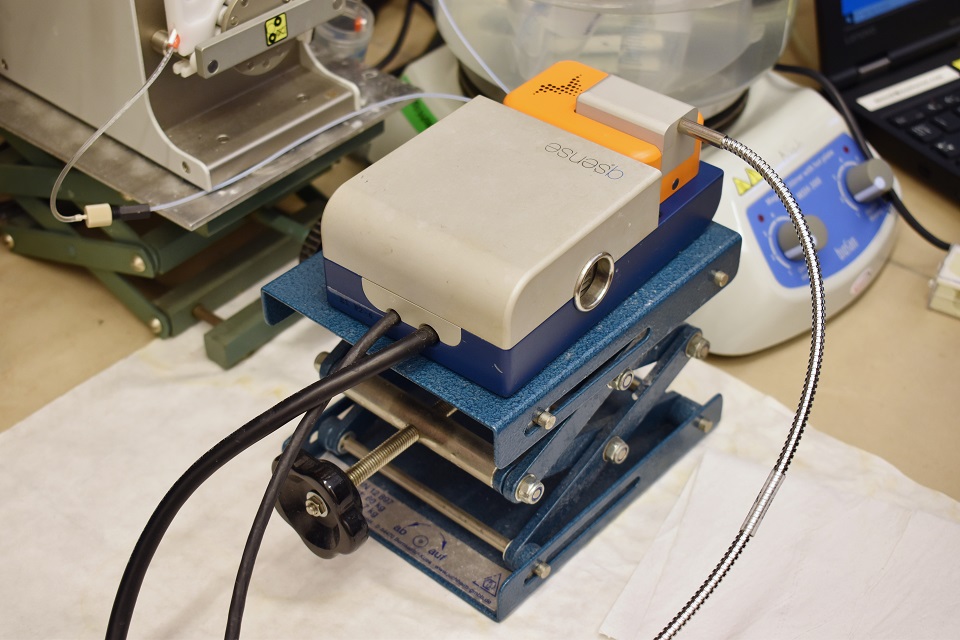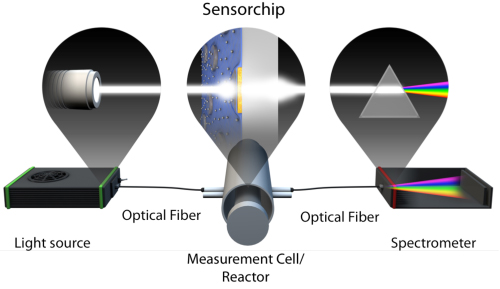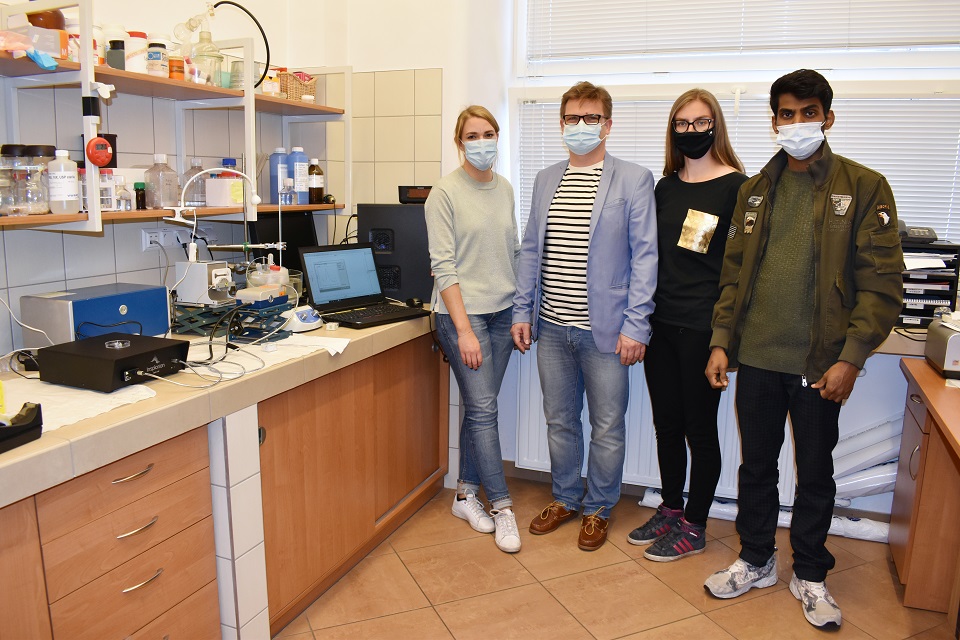WUT scientists conduct research that may help in melanoma treatment
With a growing number of people suffering from melanoma, scientists worldwide are researching an effective therapy to prevent drug resistance among patients. A team of researchers from the Warsaw University of Technology is also a part of this group.

Sara Larsson (Insplorion AB company) and Swamy Kasarla, MSc (doctoral student at LBIS Faculty of Chemistry WUT)
In a metastatic phase, melanoma has the highest mortality rates among malignant skin cancers, and its death rate increases every year. This is an effect of many patients with internal resistance to monotherapy, which aims to inhibit the pathways of MAPK kinases (by affecting gene expression, divisions, or apoptosis of cells). At the same time, no effective combined therapy for advanced melanoma has been devised yet.
‘Our team has focused on the identification and correlation of molecular markers controlling the epithelial-mesenchymal transition (EMT), typical for metastasis with pathways of energetic metabolism of melanoma with BRAF mutation,’ says Tomasz Kobiela, PhD, DSc, Professor of WUT, head of the Laboratory of Biomolecular Interactions Studies (LBIS) at the WUT Faculty of Chemistry. ‘To conduct the research, we have utilised an innovative procedure for detecting EMT transition, i.e. a test on the effect of glycans located on the surface of melanoma cells with specific lectins, using a quartz microbalance with energy dissipation monitoring (QCM-D),’ he explains.
Pioneering research equipment
The Acoulyte module (shared free of charge by Insplorion AB, a partner in the research project) is utilised in the research conducted as part of the project funded by the BIOTECHMED-1 grant. The module facilitates simultaneous monitoring of changes in resonant frequency, energy dissipation, and refractive index.
‘I’d like to emphasise that our research team was the first in the world to utilise the Acoulyte module in cell research within this project implementation!’ says Professor Kobiela.
This is not the only innovative device utilised by WUT researchers. In collaboration with a research team of Professor Cutruzzoli at the Rome University Sapienza, Professor Kobiela’s team will research cellular metabolism using the Seahorse XF24 Extracellular Flux analyzer, a device that facilitates the measurement of the effectiveness of glycolysis (as a measurement of extracellular acidification) and mitochondrial oxidative phosphorylation based on the evaluation of oxygen consumption in living cells in real time. More information about the method and conducted research can be found in the latest paper written by the group (Sobiepanek et al. 2021 Eur Biophys J, DOI: 10.1007/s00249-021-01514-8).
Informatics to serve biology
Moreover, as part of the project, melanoma cell pathways are treated with compounds and their combinations, their selection based on the conducted bioinformatic analysis.
‘To forecast the combination of drugs, we used the SynGeNet system adapted to our needs. These analyses have been conducted in collaboration with Tomasz Gambin, PhD, DSc, Professor of WUT (Faculty of Electronics and Information Technology WUT), who has been conducting research on the analysis of genome data obtained in micro-matrix experiments and as a result of next-generation sequencing,’ explains Professor Kobiela.
-
Project "Research on the effect of modulation of energetic metabolism on the glycolysation profile of melanoma cells with BRAF mutation" is implemented as part of the competition for the BIOTECHMED-1 research grants.
Research team:
Tomasz Kobiela, PhD, DSc, Professor of WUT (head of project); Tomasz Gambin, PhD, DSc, Professor of WUT; Anna Sobiepanek, DSc; Swamy Kasarla, MSc; Adrianna Piasek, MSc.




